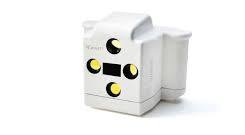What is the ICAM4D Implant Scanner?
The ICAM4D implant scanner is an advanced 3D scanning system specifically designed to capture detailed images of dental implants and surrounding tissues. Unlike traditional impression techniques, which can be uncomfortable and time-consuming, this scanner uses digital technology to create accurate, high-resolution 3D models of the patient’s oral anatomy. Its “4D” capability means it can also capture dynamic data, including subtle movements and changes over time, offering a more comprehensive view that enhances treatment planning and outcomes. The scanner is engineered to provide dentists and implant specialists with precise data needed for designing custom implants, crowns, bridges, and other prosthetics.Why is the ICAM4D Implant Scanner a Game-Changer?
1. Superior Accuracy: Accuracy is critical when it comes to dental implants. Even minor errors can lead to improper fit, discomfort, or implant failure. The ICAM4D implant scanner offers micron-level precision, capturing every detail of the implant site and surrounding tissues. This ensures that prosthetics fit perfectly, improving long-term success rates. 2. Improved Patient Comfort: Traditional dental impressions often require patients to bite into messy, uncomfortable materials. With the ICAM4D scanner, the process is completely digital and non-invasive. Patients experience a faster, more comfortable scan, with no need for impression trays or repeat visits. 3. Faster Turnaround Times: Digital scans can be transmitted instantly to dental labs or CAD/CAM systems, speeding up the design and manufacturing of implants and prosthetics. This significantly reduces the time between diagnosis and final restoration, enabling patients to receive their implants faster. 4. Real-Time Visualization: Dentists can view 3D images in real time during the scanning process, allowing them to assess and adjust as needed on the spot. This immediate feedback helps avoid errors and ensures comprehensive data capture in a single session. 5. 4D Motion Capture: The ICAM4D’s ability to capture time-based data adds a new dimension to implantology. For example, it can record jaw movements or soft tissue dynamics, helping dentists plan implants that accommodate natural motion and improve function.Key Applications of the ICAM4D Implant Scanner
- Implant Planning and Placement: With accurate 3D models, dentists can plan the optimal placement of implants, avoiding critical anatomical structures like nerves and sinuses. This reduces risks and enhances surgical precision.
- Custom Prosthetic Design: The scanner provides detailed digital impressions that serve as the foundation for designing crowns, bridges, and dentures that fit perfectly and look natural.
- Treatment Monitoring: The 4D scanning feature allows for ongoing monitoring of implant sites to track healing, bone integration, and tissue health over time.
- Patient Communication and Education: High-quality 3D visuals help dentists explain treatment plans to patients clearly, increasing trust and satisfaction.
Benefits Beyond the Clinic
Efficiency Gains: By eliminating physical impressions and enabling seamless digital workflows, clinics can increase patient throughput and reduce overhead costs. Better Outcomes: The improved accuracy and data richness translate into higher success rates, fewer adjustments, and longer-lasting implants. Enhanced Collaboration: Digital files can be easily shared with labs, specialists, and insurance providers, improving coordination and reducing errors. Eco-Friendly: Reducing the use of disposable impression materials and physical shipping supports sustainability initiatives within dental practices.Challenges and Considerations
While the ICAM4D implant scanner offers numerous advantages, dental professionals should consider the following:- Training and Expertise: Proper use of the scanner requires training to maximize its benefits and ensure accurate data capture.
- Initial Investment: The cost of acquiring advanced scanning technology can be significant, but the long-term savings and improved outcomes often justify the investment.
- Integration: The scanner should be compatible with existing CAD/CAM software and dental lab workflows to realize its full potential.









